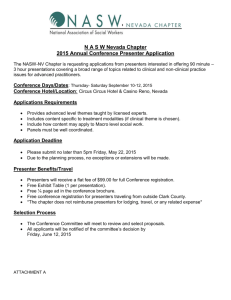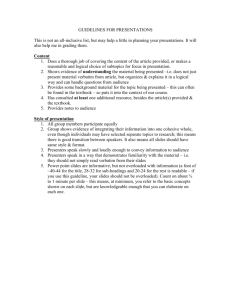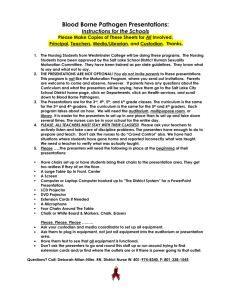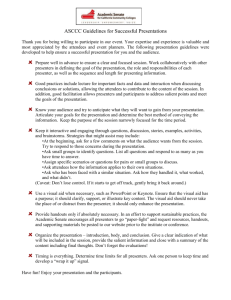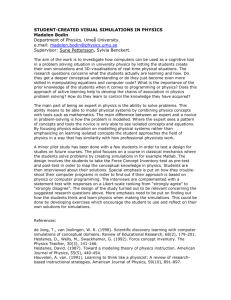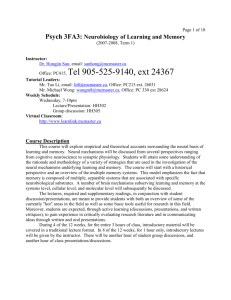psych 6083 – principles of behavior therapy team presentation project
advertisement
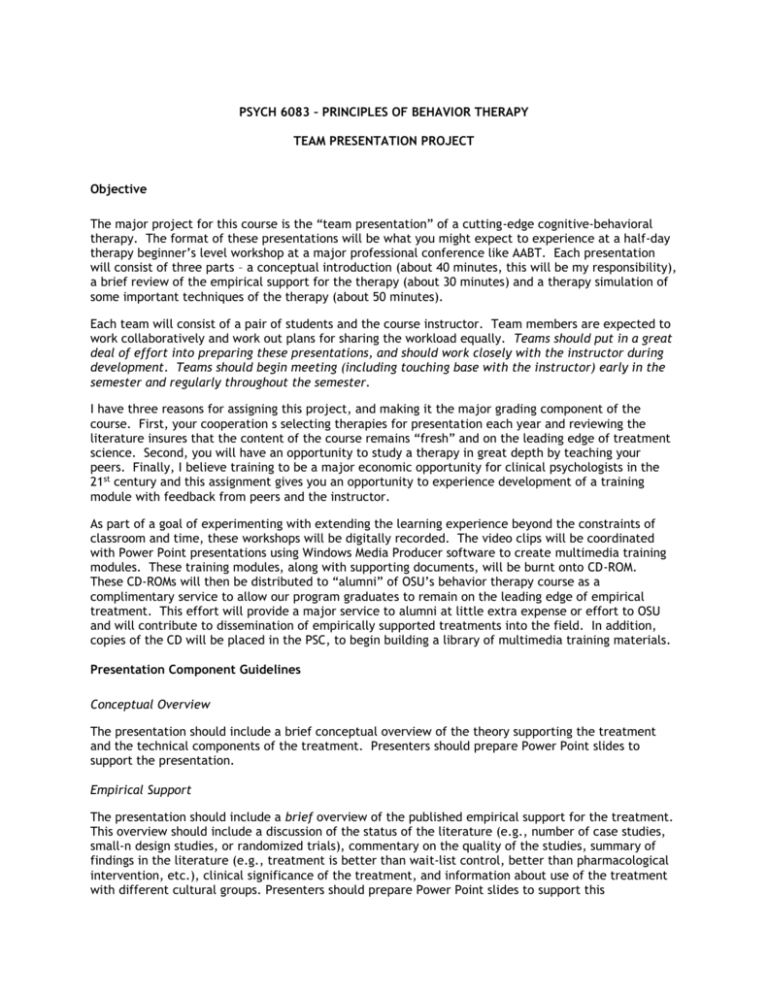
PSYCH 6083 – PRINCIPLES OF BEHAVIOR THERAPY TEAM PRESENTATION PROJECT Objective The major project for this course is the “team presentation” of a cutting-edge cognitive-behavioral therapy. The format of these presentations will be what you might expect to experience at a half-day therapy beginner’s level workshop at a major professional conference like AABT. Each presentation will consist of three parts – a conceptual introduction (about 40 minutes, this will be my responsibility), a brief review of the empirical support for the therapy (about 30 minutes) and a therapy simulation of some important techniques of the therapy (about 50 minutes). Each team will consist of a pair of students and the course instructor. Team members are expected to work collaboratively and work out plans for sharing the workload equally. Teams should put in a great deal of effort into preparing these presentations, and should work closely with the instructor during development. Teams should begin meeting (including touching base with the instructor) early in the semester and regularly throughout the semester. I have three reasons for assigning this project, and making it the major grading component of the course. First, your cooperation s selecting therapies for presentation each year and reviewing the literature insures that the content of the course remains “fresh” and on the leading edge of treatment science. Second, you will have an opportunity to study a therapy in great depth by teaching your peers. Finally, I believe training to be a major economic opportunity for clinical psychologists in the 21st century and this assignment gives you an opportunity to experience development of a training module with feedback from peers and the instructor. As part of a goal of experimenting with extending the learning experience beyond the constraints of classroom and time, these workshops will be digitally recorded. The video clips will be coordinated with Power Point presentations using Windows Media Producer software to create multimedia training modules. These training modules, along with supporting documents, will be burnt onto CD-ROM. These CD-ROMs will then be distributed to “alumni” of OSU’s behavior therapy course as a complimentary service to allow our program graduates to remain on the leading edge of empirical treatment. This effort will provide a major service to alumni at little extra expense or effort to OSU and will contribute to dissemination of empirically supported treatments into the field. In addition, copies of the CD will be placed in the PSC, to begin building a library of multimedia training materials. Presentation Component Guidelines Conceptual Overview The presentation should include a brief conceptual overview of the theory supporting the treatment and the technical components of the treatment. Presenters should prepare Power Point slides to support the presentation. Empirical Support The presentation should include a brief overview of the published empirical support for the treatment. This overview should include a discussion of the status of the literature (e.g., number of case studies, small-n design studies, or randomized trials), commentary on the quality of the studies, summary of findings in the literature (e.g., treatment is better than wait-list control, better than pharmacological intervention, etc.), clinical significance of the treatment, and information about use of the treatment with different cultural groups. Presenters should prepare Power Point slides to support this presentation. Presenters will also prepare a “quick-scan table” that summarizes the strengths and weaknesses of the available empirical studies and provide copies for the audience. Treatment Simulations The presentation should include a number of brief simulations of treatment techniques. Teams may use transcripts from treatment manuals to develop simulations, or may create them from scratch using their own understanding of the therapy or experience with using the treatment. I recommend including a discussion of the treatment rationale with a client as one of the simulations. Presenters should prepare Power Point slides to provide contextual information to support the simulations (examples: client information, session #, overview of simulated technique). Fact Sheet and “Quick-scan Table” As part of the presentation, each team should prepare a one- to two-page “fact sheet” handout for the audience, that summarizes the presentation. A format for the fact sheet will be provided by the instructor. Also, a “quick-scan” table that summarizes the strengths and weaknesses of the available empirical studies will be provided. Detailed instructions for preparing this table will be provided. In addition, all participants should be provided with handouts of the Power Point slides used in the presentation. Other Information Power Point presentations for the different components of the presentation should be combined into a single file and share a common “theme.” Every effort should be made to standardize the appearance of the slides across the different components (e.g., similar colors, fonts, font sizes, etc.). Please provide me with electronic files of all Power Point slides and the handout after the presentation for inclusion on the CD.
